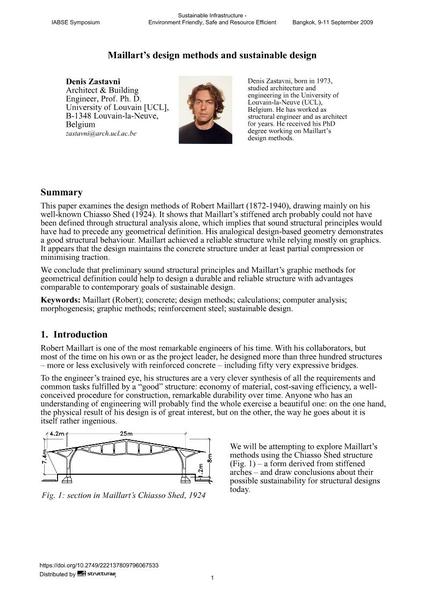Maillart’s design methods and sustainable design

|
|
|||||||||||
Bibliographic Details
| Author(s): |
Denis Zastavni
|
||||
|---|---|---|---|---|---|
| Medium: | conference paper | ||||
| Language(s): | English | ||||
| Conference: | IABSE Symposium: Sustainable Infrastructure - Environment Friendly, Safe and Resource Efficient, Bangkok, Thailand, 9-11 September 2009 | ||||
| Published in: | IABSE Symposium Bangkok 2009 | ||||
|
|||||
| Page(s): | 20-28 | ||||
| Total no. of pages: | 7 | ||||
| Year: | 2009 | ||||
| DOI: | 10.2749/222137809796067533 | ||||
| Abstract: |
This paper examines the design methods of Robert Maillart (1872-1940), drawing mainly on his well-known Chiasso Shed (1924). It shows that Maillart’s stiffened arch probably could not have been defined through structural analysis alone, which implies that sound structural principles would have had to precede any geometrical definition. His analogical design-based geometry demonstrates a good structural behaviour. Maillart achieved a reliable structure while relying mostly on graphics. It appears that the design maintains the concrete structure under at least partial compression or minimising traction. We conclude that preliminary sound structural principles and Maillart’s graphic methods for geometrical definition could help to design a durable and reliable structure with advantages comparable to contemporary goals of sustainable design. |
||||
| Keywords: |
concrete design methods sustainable design Maillart (Robert) calculations computer analysis morphogenesis graphic methods
|
||||
